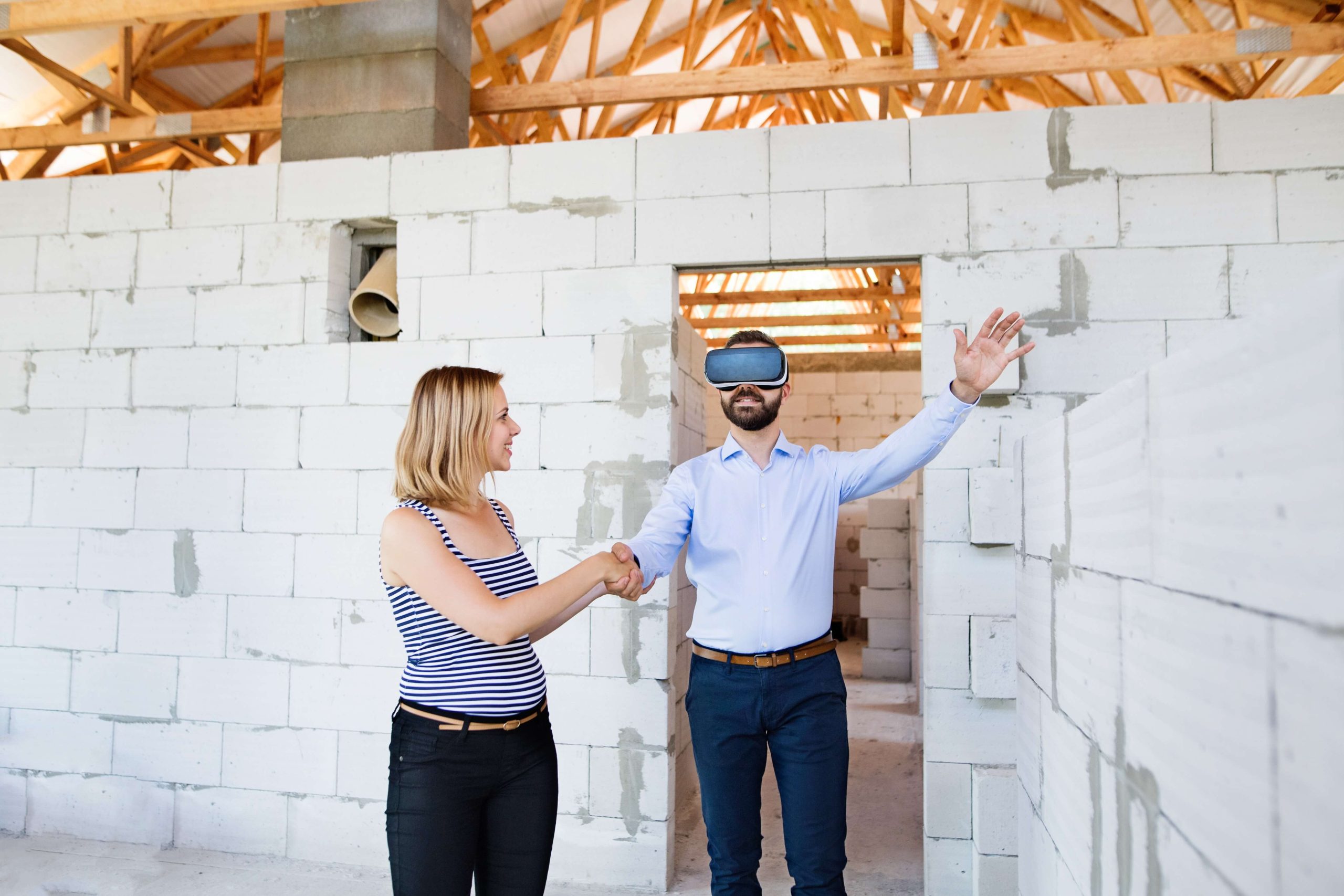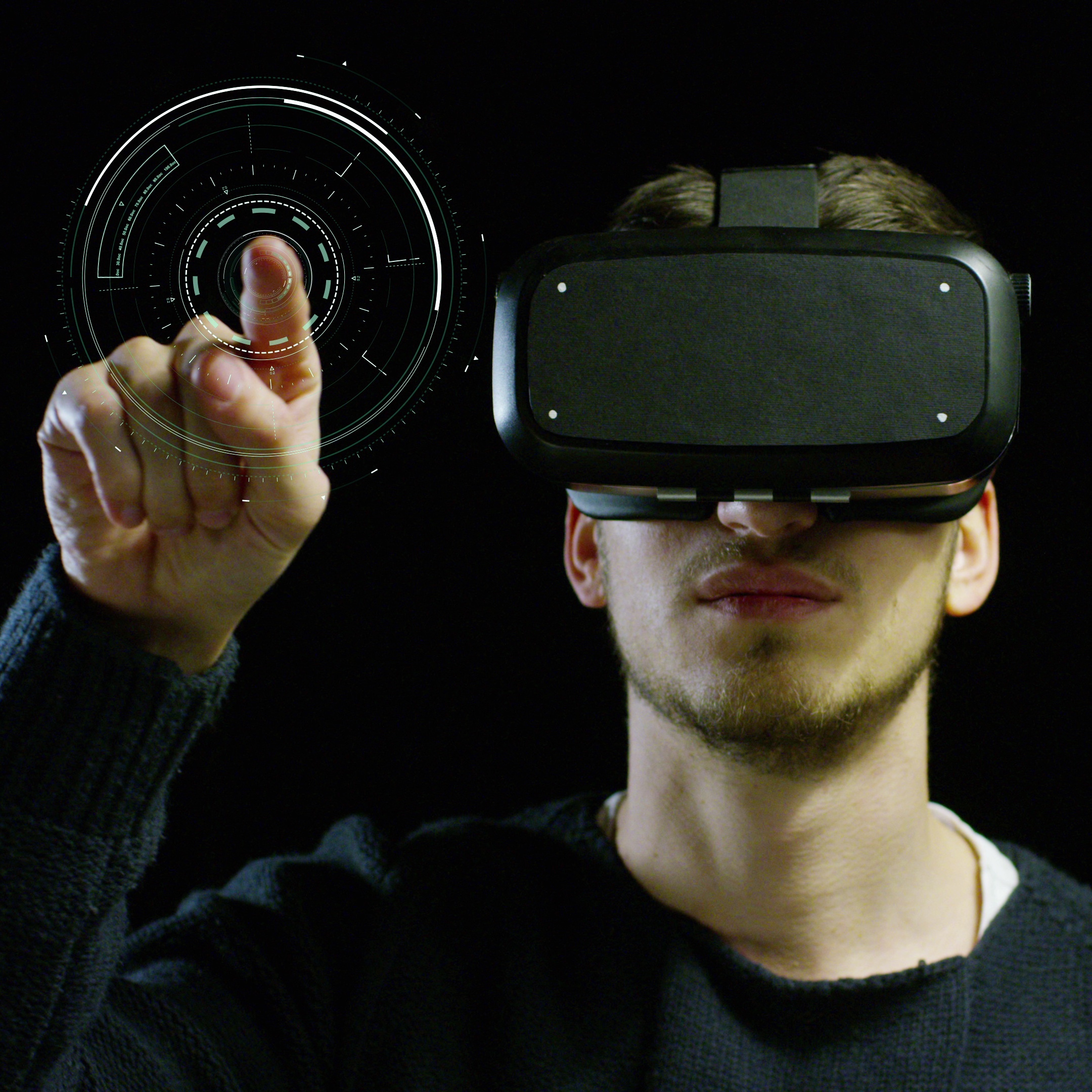How brands are capitalizing on immersive technologies in the real estate industry
Here’s why real estate companies should consider immersive technology: 72% of homebuyers say that 3D tours give them better insights into spaces than static photos. They’re also asking for more 3D tours to be included in the home listing.
This shouldn’t surprise you. After all, buyers prefer to get a closer look before they leap for many purchase categories—particularly those that represent a long-term commitment or a heavy price tag. This may be either through in-person viewing or immersive brand exercise.
Homebuyers can dive deeper into finer nuances than square footage and location with extended reality. They can examine room layouts, dimensions, and other features that help them make the right decision. Brands like MagicBricks are already moving in the right direction (more on this later), paving the way for immersive technology in the real estate sector.
So what immersive technologies should real estate companies wield to offer home-seekers deeper insights that might accelerate the buyer’s journey and ensure customer satisfaction? Let’s take a look!
Immersive tech that works wonders in real estate
Virtual Reality
With VR, you can treat buyers to a residence or office space walkthrough, including gardens, kids’ play zones, and amenities. You generate interest and engagement; in return, they get a sense of the property’s layout and the general look and feel they can expect.
Here are some ways real estate brands can harness immersive tech for this purpose:
- Host VR tours or videos on your website, or using scan codes, for guests to experience from anywhere using VR glasses
- Use a centralized location, like your corporate headquarters or any other high-traffic location, for an experience centre or experience capsule that allows guests to virtually experience a variety of properties using VR glasses or even VR domes that can accommodate multiple parties.
- You can even offer virtual experiences of homes at trade fairs or showcase other options to buyers who view one property, saving them the hassle of visiting multiple properties before zeroing in on their favourites.
Virtual tours are a boon to home seekers because they create convenience at the early stages when they need to sift through countless options to narrow down their choices. Immersive experiences like virtual reality also aid real estate companies and agents because they allow you to expand your reach to remote buyers and let you showcase a more significant number of properties with less time and less effort.
Augmented Reality
You’ve probably been in countless conversations with homeowners concerned about whether furniture will fit or be arranged as desired in the home you’re showing. With AR, you can help them determine whether “the bed will fit against this wall” or “the painting will work there”.
That’s because AR allows you to overlay virtual objects to a real-world set-up so that home seekers can visualize how their furniture, artwork, and appliances would look and fit into a space.
It would help if you simply had a table with an AR app that allows buyers to overlay their chosen objects.
Holograms
With holographic technology, real estate companies can offer immersive experiences of projects in very early stages to investors, project approval regulators, and even buyers who want to book space early in the game.
Alternatively, you could have VR tours of key homes and offer a hologram of the rest of the project, including play zones, gymnasiums, gardens, and public areas. If you want to showcase a unique green feature, like rainwater harvesting, holograms might be a great way to go about it.
Similarly, if you have a retail project and you want to showcase inventory storage zones and other back-of-house features, a hologram might do the job as well as virtual reality.
Behind the scenes
VR tours are made using strategically positioned 360° cameras throughout the property. The footage is then stitched together to create a realistic 3D experience that gives potential buyers the experience of being inside the home.
Augmented reality relies on three leading technologies used in three steps:
Step 1: SLAM (simultaneous location and mapping) that merges virtual images with real-world spaces using sensors, creating detailed AR simulations.
Step 2: Depth tracking measures distances from the AR device’s camera sensor.
Step 3: After SLAM and depth tracking, an AR app is used to process and depict the visuals on the user’s device.
From what we’ve discussed, it’s clear that creating these experiences in-house might take a lot of work for many brands. It might not even be worth it, considering how often real estate brands will use these technologies and how much money they’ll make. That’s where outside help comes in.
Regarding immersive technology for real estate, there are several options from different brands. Let’s take a look at a few of them.
Tools and brands at the forefront
There are already brands creating and utilizing immersive technologies in real estate. Let’s look at a few of these.
QuarkXP uses VR to transform the property viewing experience. They have a tool called Farsight that offers remote 360-degree guided tours. The tool also leverages data analytics that real estate companies can use to personalize the tour.
Floorfy allows real estate companies to create VR tours automatically and independently. According to their website, “you just need to capture 360º photos of the property with one of their cameras (or a compatible one) and upload them to your Floorfy account”, and they will generate a video for you.
Silversea Media creates 3D versions of your property using visual and spatial data that turn into 4D virtual tours, ultra-realistic virtual staging and virtual showrooms.
homeAR uses AR to rope buyers in the property development process. Buyers can visualize the finished property and provide their feedback, which also allows developers the opportunity to meet needs where possible.
MagicBricks, a consolidator in the real estate space, has built a virtual experience center and is promoting the idea of “No More Sundays Wasted”, hinting to homebuyers that instead of many weekends devoted to visiting properties, they can complete more ground in a single day by undertaking virtual tours.
Why real estate is ripe for immersive tech
High-cost product
For the most part, homes are often a one-time, lifelong investment with a purchase size that runs into crores. Consequently, real estate companies can experience quicker ROI on immersive technology investments in product marketing, making an upfront spend on such technology more viable.
Product demands high scrutiny
Every purchase commands a corresponding level of scrutiny, typically associated with the investment’s size, the purchase’s implications, and how long one will need to live with one’s decision.
Let’s look at a few categories of purchases: Stationary would not call because if you don’t like a pen, for example, it’s easy enough to leave it on your colleague’s desk and get a different pen.
For SaaS products, your scrutiny would depend on how much the service in question costs. A smartphone or laptop purchase typically undergoes a fairly high level of scrutiny. You’ll want to check out those specs and features to some extent, to get the functionality desired. Carrying on this logic, a home that you’re likely to live in for decades would command the highest level of scrutiny, and therefore, a VR tour would be appreciated to a higher degree by the buyer audience.
Pain point is tremendous
People aren’t going to “settle” for a house they don’t like, even if they might sometimes do so for a pair of trousers or a smartphone. On average, home seekers look at 10-15 houses, and some people look at dozens before they make a choice. and shortlisted homes are often visited on multiple occasions.
The time cost is immense, and frustration levels are high. Immersive tech can help real estate companies overcome these problems. Moreover, the solution, VR tours, can bridge the gap and solve the problem completely.
Historical utilization
VR tours are a little of a leap from the 3D tours that realtors already use and the photos that are already uploaded to consolidator websites like Loftey in the US or Broker.Com and MagicBricks in India.
Similar use-cases thriving
According to research carried out in Germany by Statista, almost 50% of people would use VR as a tool for choosing their holiday destination (provided the tool was free). In other words, people are evaluating “spaces” and “places” virtually, creating a ready environment for immersive technology in real estate.
Immersive marketing is the present and future of real estate marketing
To sum up, immersive technologies revolutionize how real estate is showcased and marketed. These cutting-edge tools provide buyers with unparalleled opportunities to explore properties in vivid detail, transcending the limitations of traditional static photos. VR offers a fully immersive experience, allowing potential buyers to virtually step inside properties from anywhere in the world, while AR takes it a step further by enabling them to visualize their furnishings within the space. As more brands and sectors embrace these technologies (MagicBricks being a case in point) it becomes clear that these technologies are not just fleeting trends but indispensable tools that drive convenience for buyers and sellers.



